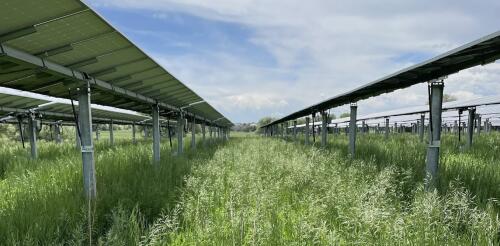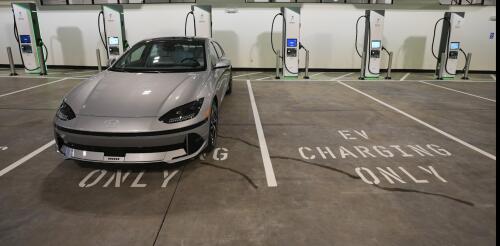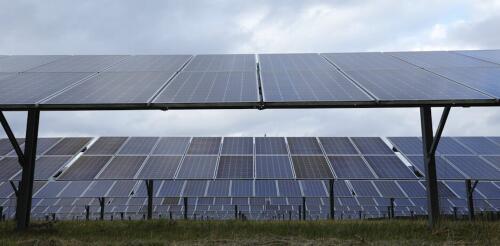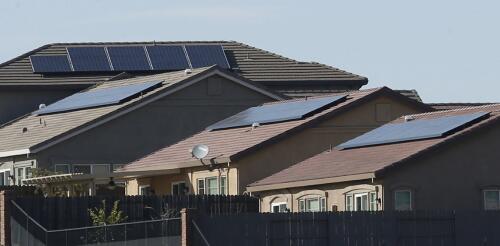environment
As societies look for ways to cut greenhouse gas emissions and slow climate change, large-scale solar power is playing a central role. Climate scientists view it as the tool with the greatest potential to reduce carbon dioxide emissions by 2030. In the U.S., the Department of Energy predicts that solar will account for nearly 60% of all new utility-scale electricity-generating capacity installed in 2024. But ideal locations for solar development often overlap with croplands or grasslands used for livestock grazing. Typically, large-scale solar arrays are designed to maximize energy generation, without much consideration for the ecosystems in which they are placed. For example, grading land and removing vegetation can cause erosion and send runoff into waterways. Solar developers have been fined for such environmental violations in Georgia, Massachusetts, Alabama, Idaho and Illinois. There also are concerns about how large solar installations affect animal movement patterns...
The U.S. Environmental Protection Agency released strict new emissions limits on March 20, 2024, for cars built from 2027 through 2032. The final rule for Multi-Pollutant Emissions Standards caps a process that started almost a year earlier, when the Biden administration first proposed groundbreaking regulations that would essentially require automakers to make a substantial pivot toward electrification. The original proposal met significant pushback from carmakers and unions, who argued that the industry needed more time to switch from gas-powered cars to EVs. As a result, while the final target that this rule sets is very similar to the one that was initially proposed, the timetable in the final rule – especially in the earlier years – is relatively relaxed. That means more carbon emissions in the short run. Politics is inevitably an important consideration in regulating major industries. The new rule is projected to cut carbon dioxide emissions from passenger ca...
Michigan residents overwhelmingly want more solar power. In the spring of 2023, nearly two-thirds of 1,000 state residents surveyed supported additional large-scale solar development. In the Energy Values Lab at Michigan State University, we study how the public, and specifically community members living near large-scale wind and solar projects, perceive those projects and the processes by which they are approved. According to a survey we conducted in the fall of 2023 that has not yet been peer reviewed, there may be less support in urban Michigan communities, particularly among those already living close to an existing solar project. Fewer than half of the 158 residents who took our survey supported their local project. And around the 10-acre, DTE Energy-owned O’Shea Solar Park in Detroit, support was even lower, with only a third of respondents supporting that project. What predicted residents’ support of their local project? Mainly whether they saw the deve...
After two years of intense public debate, the U.S. Securities and Exchange Commission approved the nation’s first national climate disclosure rules on March 6, 2024, setting out requirements for publicly listed companies to report their climate-related risks and in some cases their greenhouse gas emissions. The new rules are much weaker than those originally proposed. Significantly, the SEC dropped a controversial plan to require companies to report Scope 3 emissions – emissions generated throughout the company’s supply chain and customers’ use of its products. The rules do require larger companies to disclose Scope 1 and 2 emissions, which are emissions from their operations and energy use. But those disclosures are required only to the extent that the company believes the information would be financially “material” to a reasonable investor’s decision making. More broadly, the new rules require publicly listed companies to disclose cli...
Small-scale solar power, also known as rooftop or distributed solar, has grown considerably in the U.S. over the past decade. It provides electricity without emitting air pollutants or climate-warming greenhouse gases, and it meets local energy demand without requiring costly investments in transmission and distribution systems. However, its expansion is making it harder for electric utilities and power grid managers to design fair and efficient retail electricity rates – the prices that households pay. Under traditional electricity pricing, customers pay one charge per kilowatt-hour of electricity consumption that covers both the energy they use and the fixed costs of maintaining the grid. As more people adopt rooftop solar, they buy less energy from the grid. Fewer customers are left to shoulder utilities’ fixed costs, potentially making power more expensive for everyone. This trend can drive more customers to leave the system and raise prices further – a...




